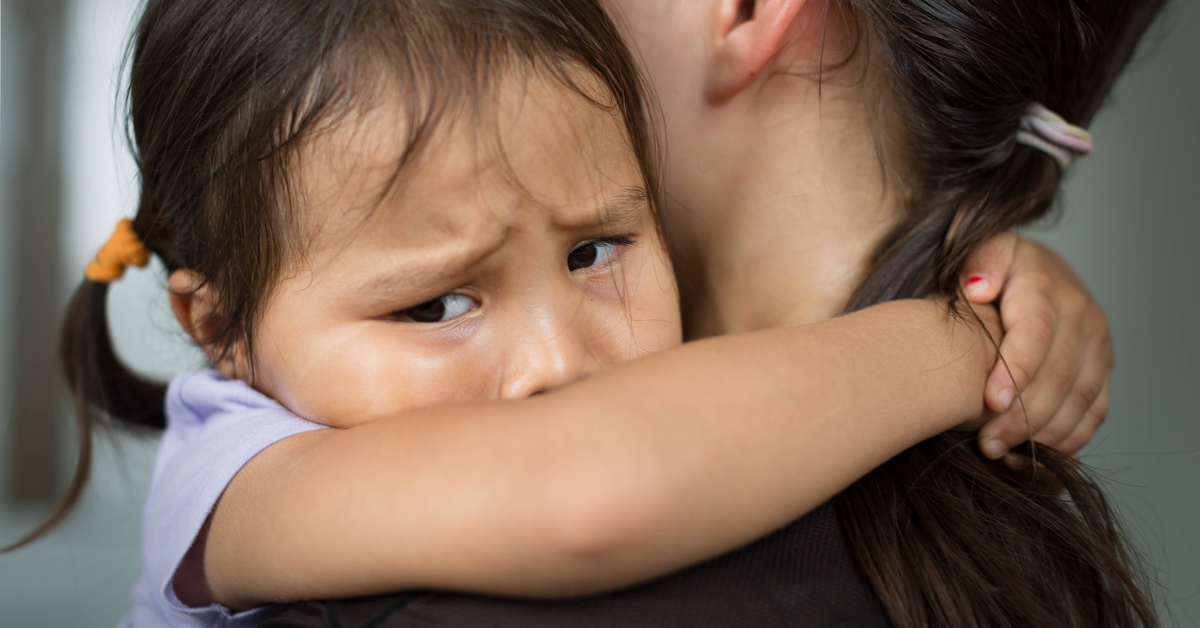
The experience of separation, even a brief one, is important for both parents and child. Yet while important, separation anxiety—feeling anxious when apart—is common in infants and toddlers. Most children outgrow separation anxiety by age 3. There are many ways that parents can lessen separation anxiety in babies and toddlers and turn the experience into an opportunity for growth.
The Beginnings of Separation Anxiety
During the first years of life the sorrow of parting is challenging and can stir intense emotions. Separations start early, from the very first time a baby crawls away from his mother’s sight and the first time a baby is left with a sitter, to a visit with grandparents and the beginning of preschool and kindergarten. Eventually we come to know that separation is a part of life.
The young child, however, has limited experiences. Cognitive and emotional abilities are just developing so separations seem unending. Saying goodbye is tough—it arouses a mixed bag of feelings, from sadness to grief and anger. In fact, children build a sense of self through these series of separations and rejoinings.
Separation Anxiety Is a Process
Indeed, separation anxiety is a process not a problem. This process is integral to maturation and moving on in life. Separation anxiety usually surfaces around six months and abates by three years. As parents, we can meet the expressions of separation anxiety when they surface with understanding and empathy. It’s vital we try to facilitate the process, offer support, and recognize that it’s a normal childhood fear. Doing so allows children to develop a sense of control and self-esteem, and come to know they can cope with uncomfortable feelings.
If you are concerned your child isn’t adapting or if their separation anxiety is extreme and prolonged, this is a red flag. Consider consulting a professional. Early childhood educators are especially attuned to this developmental stage so be sure to chat about what to expect with them before your child starts preschool if possible.
Read Next | Dads Get Depressed Too: Here’s What to Do About It
Separation Anxiety As a Positive Expression
Separation anxiety is an emotion we assume is negative, but in order to have this feeling in the first place we need to feel we have something to lose. This is a healthy response to a threat of being left. The young child is saying: “I love you,” “I’m attached,” and “Don’t leave me.”
Separation Anxiety and School
These bittersweet expressions are healthy and necessary even though they cause pain. When a child enters school, she faces her fears in a new and unfamiliar setting. Children have all kinds of feelings about leaving the safety of their families and entering a group of unfamiliar people. Some may be stoic. Others may weep, and others may kick and scream. It’s all within the normal range. It’s hard to predict what type of reaction your young child will have. If it’s the first time your child is away from home, be prepared to spend some time offering solace and acknowledging that although saying goodbye is hard, we always come back.
Lessening Separation Anxiety
We can help lessen the anxiety associated with separations by listening closely to what our child is communicating. Acceptance of our children’s fear, sadness, and anger is essential. While separations are difficult, we can provide our children with reassurance that we are returning. If the transition is turned into a positive learning experience, eventually the child will come to know that separations and reunions are a part of loving and being loved.
Separation Anxiety Tips
Here are some developmentally appropriate tips to take the sting out of separations. Follow them to turn partings into a positive growth experience. Find more ideas to lessen separation anxiety here.
- Prepare your child for the separation, or change, as far in advance as possible.
- Visit a new school or child-care center with your child before enrollment.
- Express enthusiasm for all the fun things your child will be doing while you are apart.
- Paint a positive picture of the experience by talking to your child about the other people, children, toys, and activities.
- Encourage your child to talk about concerns and let her know that having them is OK!
- Read stories about animals and children who have successfully coped with separations.
- Give a family photo to your child to take with her when you are separated.
- Have your child bring along a favorite blanket, stuffed animal, or toy to help soothe anxiety. These are called transitional objects.
- Arrange your schedule so you have extra time to spend with your child during the adjustment period before a separation is to occur.
- Although it may be tempting, do not sneak away. It’s not a good practice. Try to develop your very own goodbye ritual instead.
- Give your child your undivided attention when saying goodbye and offer lots of love and affection.
Suggested Resources
The following is a list of classic tales involving separations and joyous reunions. While instilling the love of the written word, your child can symbolically work through fears and delight in the quality together time.
Goodnight Moon by M.W. Brown
You Go Away by D. Corey
The Goodbye Book by J. Viorst
Hello, Goodbye by D. Lloyd
Dawn Marie Barhyte is a widely published author with over a hundred articles to her credit. A former early childhood educator and co-director, Dawn continues to touch the lives of families through her writing. She lives and works in the beautiful Hudson Valley, NY with her beloved husband and rescue chihuahua dachshund.
Like what you read? JOIN the Mommybites community to get the latest on FREE online classes, parenting advice, events, childcare listings, casting calls & raffles, and our Parents With Nannies Facebook group. SIGN UP NOW!

Read Next | This Is How Breathing Techniques Can Reduce Anxiety in Children



